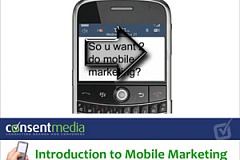In the world of marketing, understanding human psychology is crucial for creating effective copy that persuades and engages audiences. One powerful tool in a marketer's arsenal is labeling.
Labels have the ability to shape perception, evoke emotions, and influence decision-making processes. Let’s delve into the psychology behind labeling and explore how marketers can leverage these concepts to create better copy that resonates with their target audience resulting in more sales.
1. The Impact of Stereotyping
Labels can lead to stereotyping, where certain characteristics or traits are assigned to a group of people. Stereotypes can be based on factors such as gender, race, age, or occupation.
By understanding stereotypes, marketers can use labels strategically to shape how individuals perceive and respond to their marketing messages. For example, if your target audience identifies as environmentally conscious, using labels such as "eco-friendly" or "sustainable" can appeal to their values and increase their interest in your product or service.
However, exercise caution when using stereotypes to avoid perpetuating unfair biases or prejudices.
2. The Power of Priming
Labels can prime individuals, influencing their subsequent thoughts and behaviors. Priming refers to the activation of certain concepts or associations in our minds, which can affect our judgments and decision making. For example, if a person is labeled as "untrustworthy," others may be primed to be more skeptical of their actions and less likely to trust them.
By strategically choosing labels, marketers can activate specific concepts or associations in the minds of their audience. This can significantly impact their judgments and decision-making processes, making them more receptive to the marketer's message.
3. Persuasive Framing
The way a message or issue is framed can have a profound effect on how people perceive it. Labels play a crucial role in framing, as they help shape the perception of an issue and influence others' opinions.
Consider the emotional response or associations that different labels evoke and select the ones that align with your desired message. For example, if you want to emphasize the quality and luxury of your product, using labels like "premium" or "high-end" can enhance that perception.
By carefully selecting labels, marketers can evoke different emotional responses and shape public opinion in their favor.
4. Social Identity Theory
Labels can tap into individuals' social identities and group affiliations, influencing their attitudes and behaviors. People derive a part of their self-concept from the groups they belong to.
By labeling someone as a member of a particular group, we can leverage their identification with that group to influence their attitudes and behaviors. For example, political campaigns often use labels such as "liberal" or "conservative" to appeal to voters who identify with those ideologies.
By understanding the social identities of their target audience, marketers can choose labels that resonate with them, creating a stronger connection and increasing the likelihood of engagement.
5. Confirmation Bias
Labels can trigger confirmation bias, where individuals seek information that confirms their preexisting beliefs. Marketers can utilize this cognitive bias by selecting labels that align with their target audience's existing beliefs or desires. Here's an example that demonstrates how stereotyping could potentially be used in persuasive copy:
Example: An online fitness program targeting busy professionals
Title: Get Fit: Conquer Your Busy Schedule with Our Program
Opening sentence: Are you a busy professional constantly juggling work, family, and social commitments?
6. Social Proof
Social proof is a psychological phenomenon where people look to others for guidance and validation assuming the actions or beliefs of others reflect correct behavior in a given situation. In marketing, social proof is employed to increase credibility, trust, and persuasion by showcasing that others have already taken a desired action or endorse a product or service.
Here are six ways to demonstrate social proof:
- Testimonials and reviews. Include testimonials from satisfied customers or positive reviews from reputable sources.
- Influencer endorsements. Collaborate with influencers or industry experts who have a significant following and credibility in your target market. Their followers perceive their endorsement as a validation of quality and value.
- Social media engagement. When potential customers see that others have engaged positively with your brand on social media, they may be more inclined to trust your offerings and be persuaded to engage or make a purchase.
- Case studies and success stories. Highlighting case studies or success stories that demonstrate real-life examples of individuals or businesses achieving desirable outcomes with your product or service can be highly persuasive.
- User-generated content. Encouraging and showcasing user-generated content can be a powerful form of social proof. When potential customers see real people like themselves engaging with and endorsing your brand, it enhances credibility and trust, influencing their decision-making process.
- Trust seals and certifications. Display trust seals, certifications, or awards from recognized authorities or organizations to provide social proof of your credibility and adherence to certain standards.
More Tips On How to Write More Effective Copy
- Identify target audience identities. By understanding the social identities and group affiliations of their audience, marketers can use labels that resonate with their identity, values, and aspirations.
- Frame messages strategically. Carefully selecting labels that evoke the desired emotional response or associations can significantly influence how people perceive a product or service.
- Use positive and aspirational labels. Labels that evoke positive emotions and aspirations can create a sense of desirability and increase engagement with the marketing message.
- Appeal to confirmation bias. Selecting labels that align with individuals' preconceived notions can tap into confirmation bias and increase the likelihood of acceptance. However, claims should always be honest and supported by evidence.
- Personalize the messaging. Tailoring the copy to address individual needs and preferences can enhance relevance and create a stronger connection with the audience.
Ethical Considerations
As a responsible marketer, you must consider ethical implications. It is crucial to avoid perpetuating stereotypes, biases, or unfair judgments and prioritize understanding, empathy, and fairness in your interactions as you focus on building genuine connections and providing value to your audience. Don’t tarnish your brand and reputation, always take the high road. Authenticity and honesty should guide the use of all these techniques to ensure continued trust and credibility with the audience.
Ongoing Optimization
By combining a deep understanding of human psychology with ethical practices, marketers can create compelling copy that captures attention, influences perception, and motivates action.
Constant testing, iteration, and audience feedback are essential for refining labeling strategies and optimizing marketing campaigns over time and can stay ahead in the ever-evolving landscape of persuasive marketing.














